Does Lizard walk or crawl? Let’s Know
Lizards prefer to crawl rather than walk. They move by sprawling their legs and keeping their bodies close to the ground. This type of movement is known as “quadrupedal locomotion.”
Lizards have four legs, and they use all of them to move in a series of crawling or shuffling motions. However, some lizards, such as the basilisk lizard, may run for short distances on their hind legs, giving the illusion of walking or even “water-walking” on the surface of water.
While crawling is the more common mode of movement for lizards, there are some species that are capable of walking. Walking in lizards is characterized by a more upright posture and a coordinated movement of their legs.
Lizards are very diverse organisms, with over 6,000 species known to exist in various habitats throughout the world. As a result, depending on their individual adaptations and habitats, their means of mobility can differ.
While most lizards crawl with a quadrupedal gait, their crawling techniques can vary. Some lizards move in a slow and methodical crawl, pushing themselves forward with their limbs in a coordinated fashion. Others may demonstrate a more quick and agile crawling action, allowing them to efficiently cross complicated terrain or elude predators.
Crawling behaviour varies throughout lizard families and species. Some lizards, such as skinks, move in a snake-like side-to-side motion, with their bodies undulating from side to side as they move ahead. This serpentine movement enables them to travel quickly into tiny holes and tunnels.
It’s worth noting that several lizard species have acquired specialised locomotion. Geckos, for example, have exceptional adhesive skills due to their specialised toe pads. They use a mix of microscopic hair-like structures called setae and intermolecular interactions to adhere to diverse surfaces, including vertical walls and even ceilings. This extraordinary skill allows them to move with ease in seemingly difficult situations.
Furthermore, arboreal lizards like chameleons and anoles have prehensile tails that help them climb and hold branches. They can wrap their tails around objects to provide extra support and stability when they navigate through trees or other tall structures.
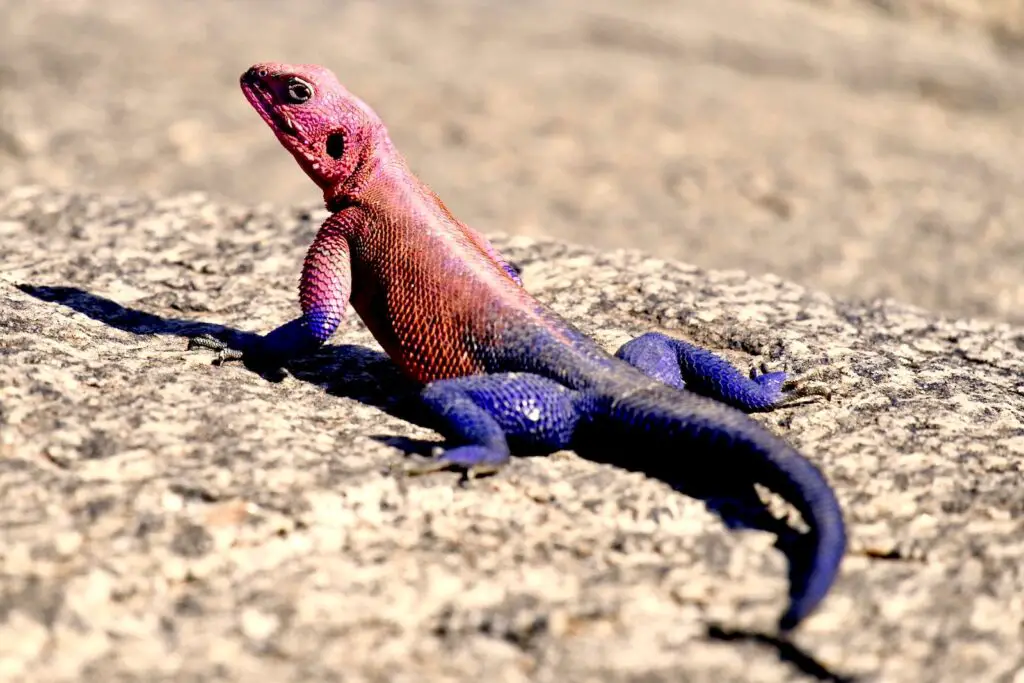
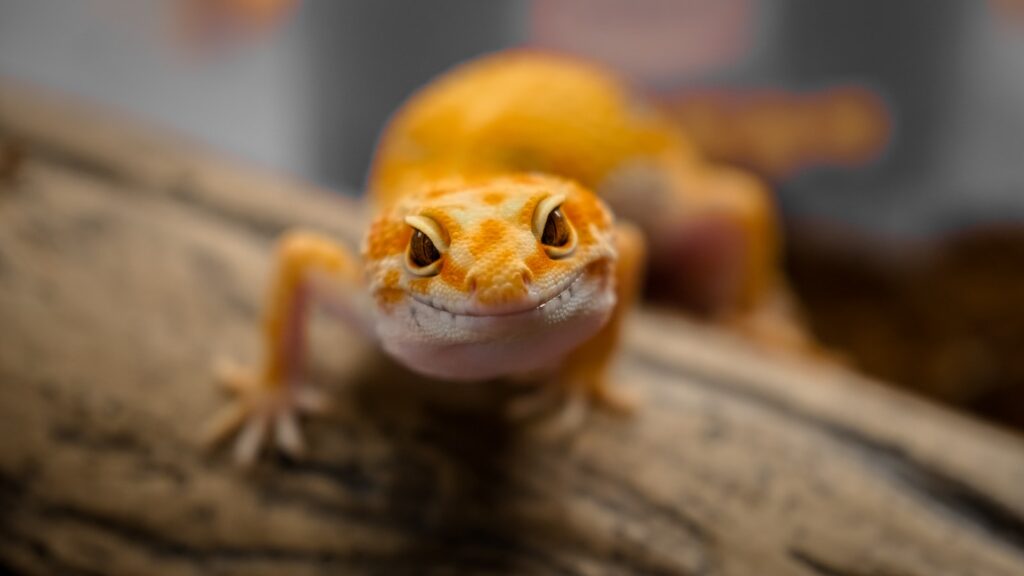
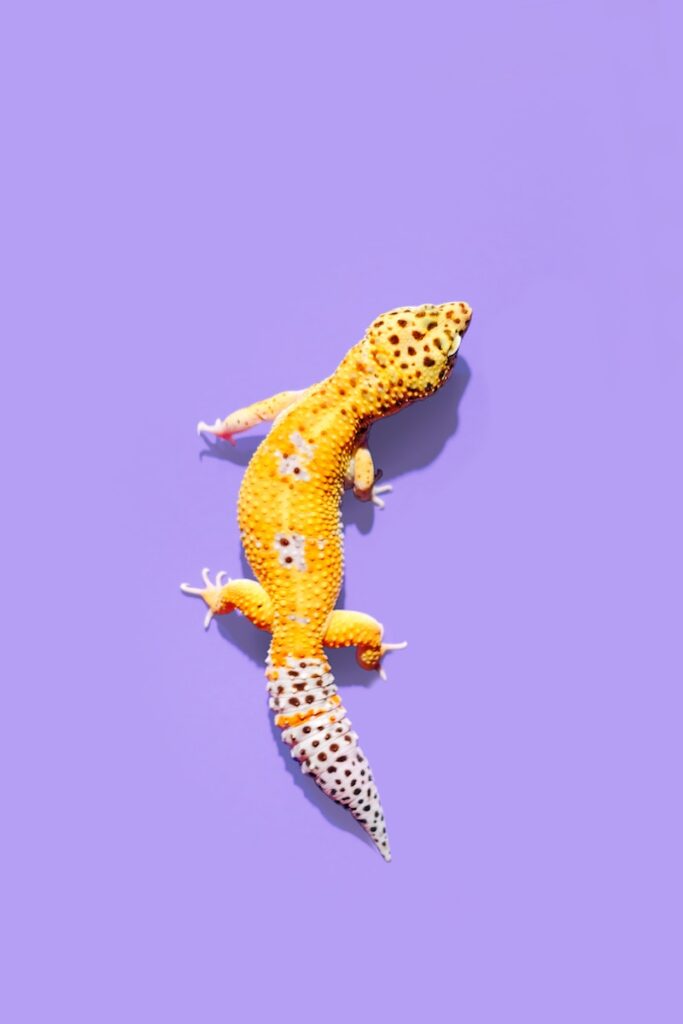
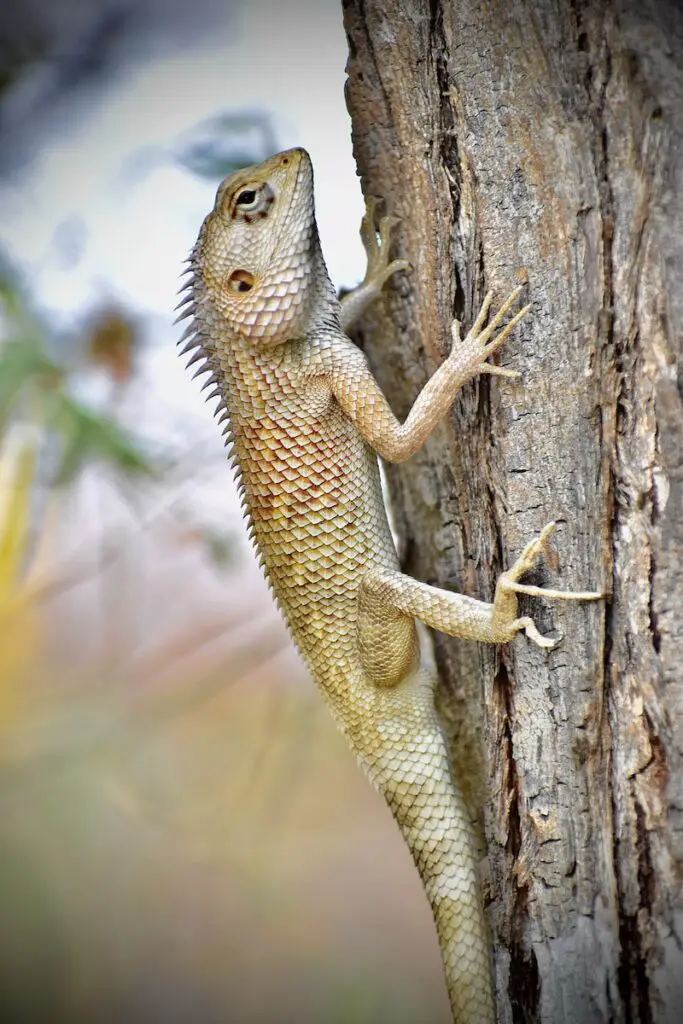
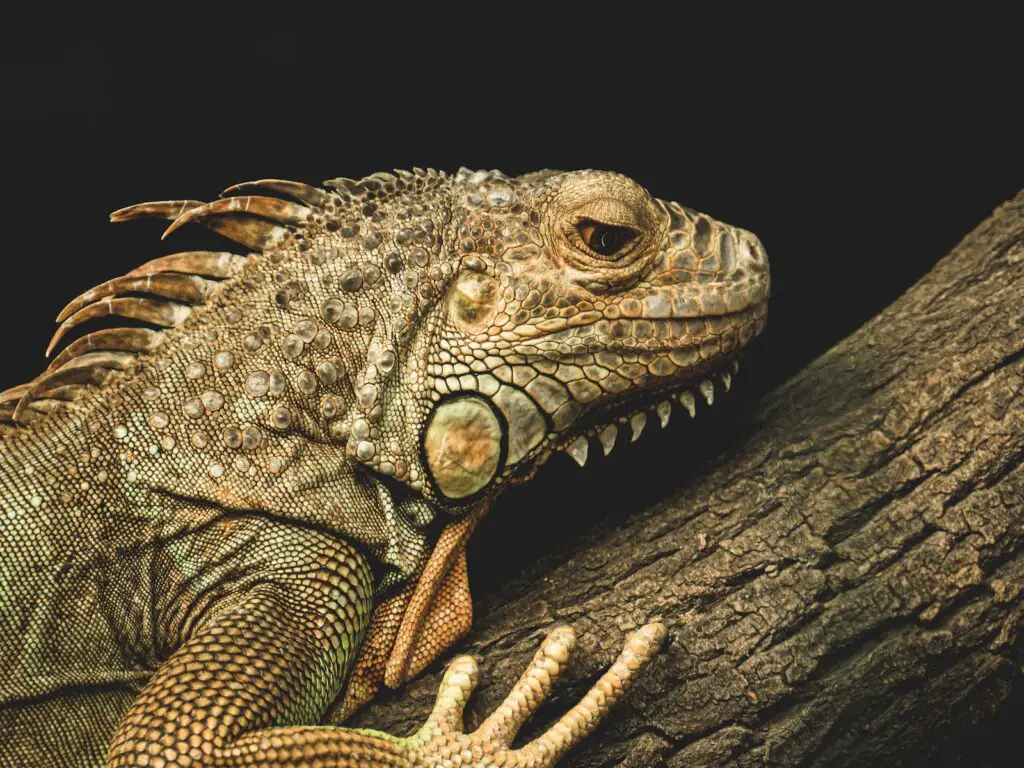

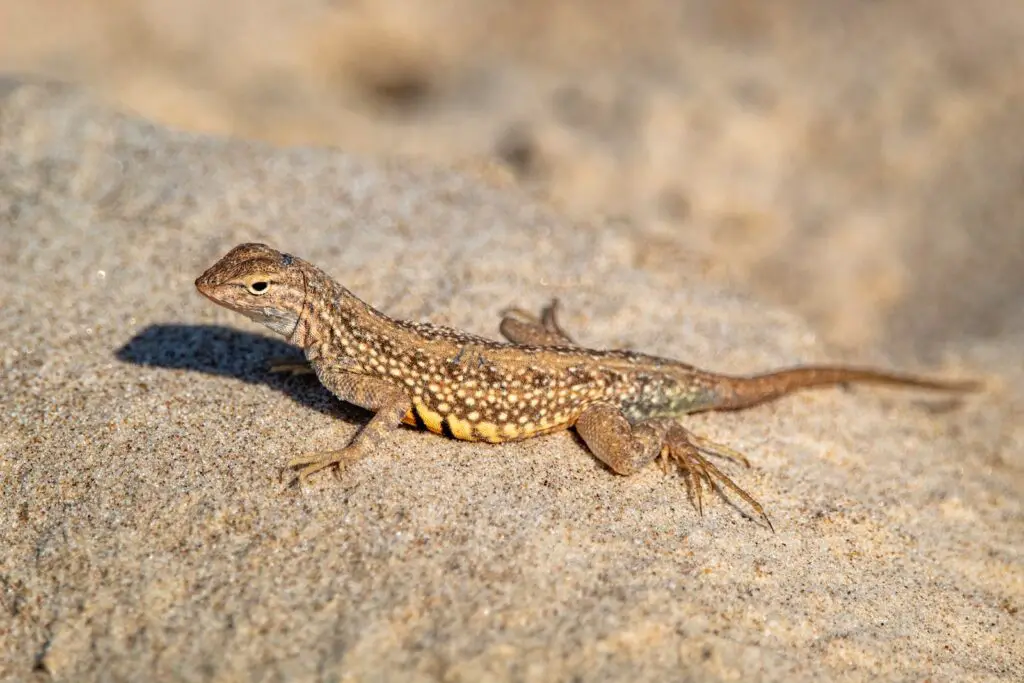
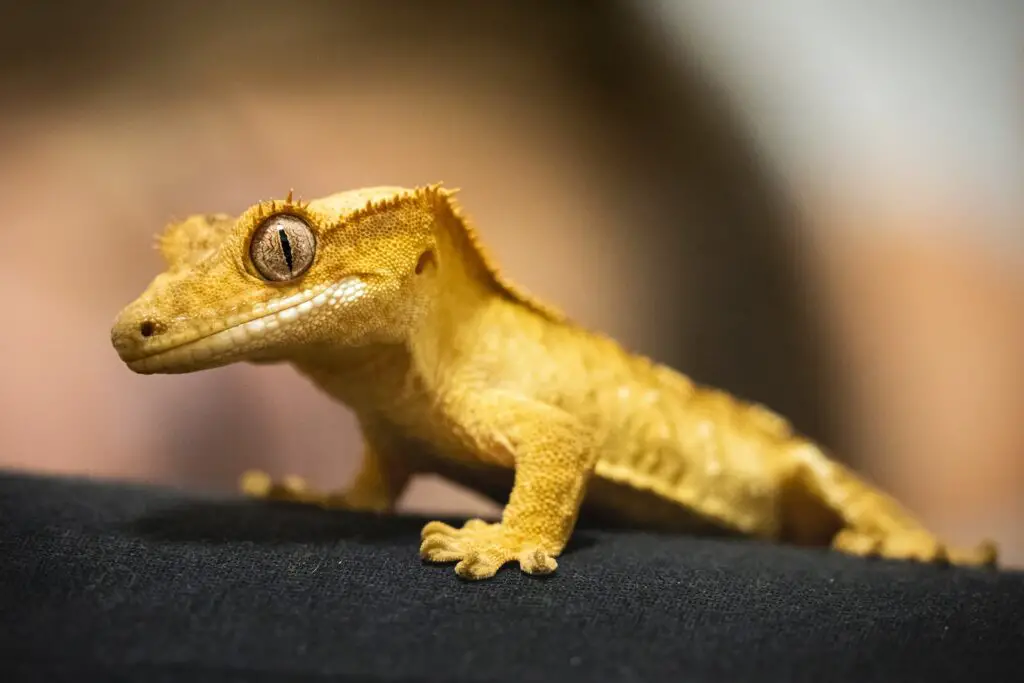
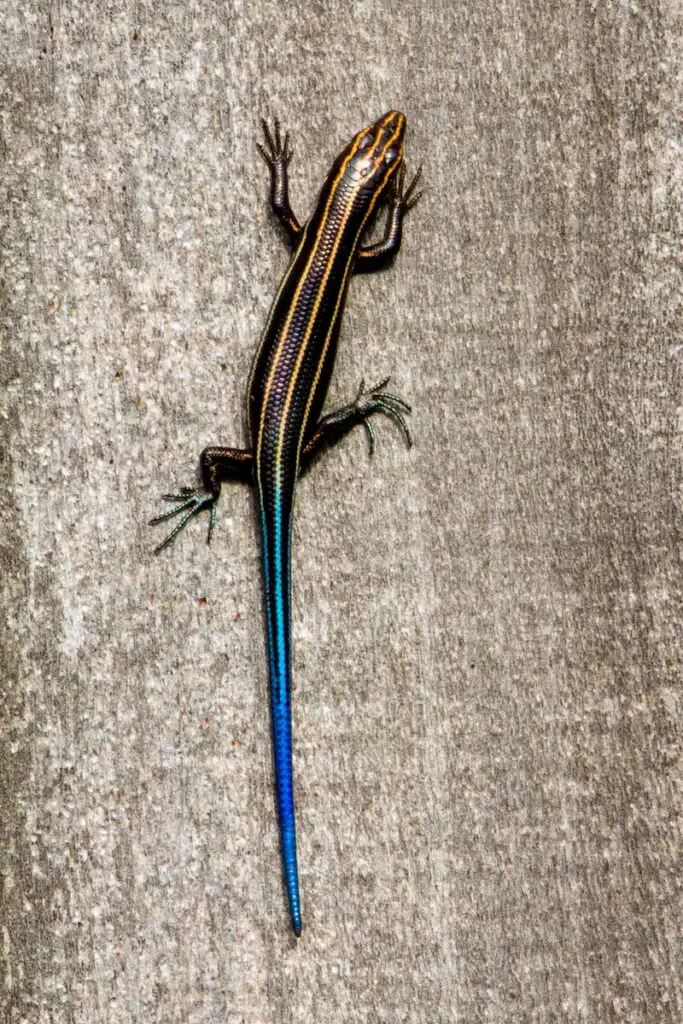
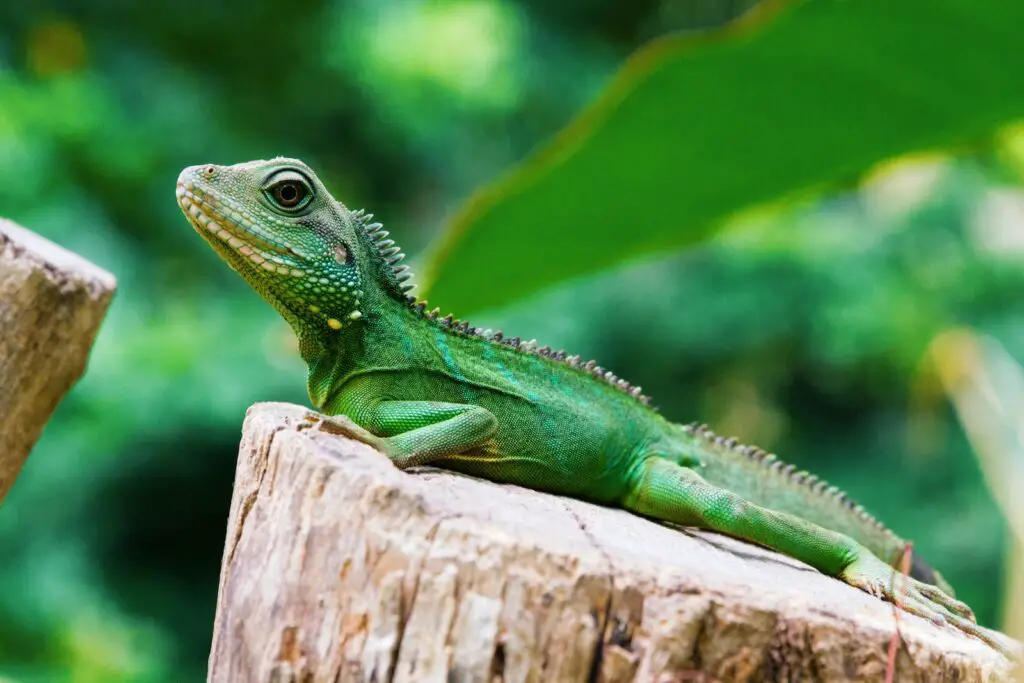
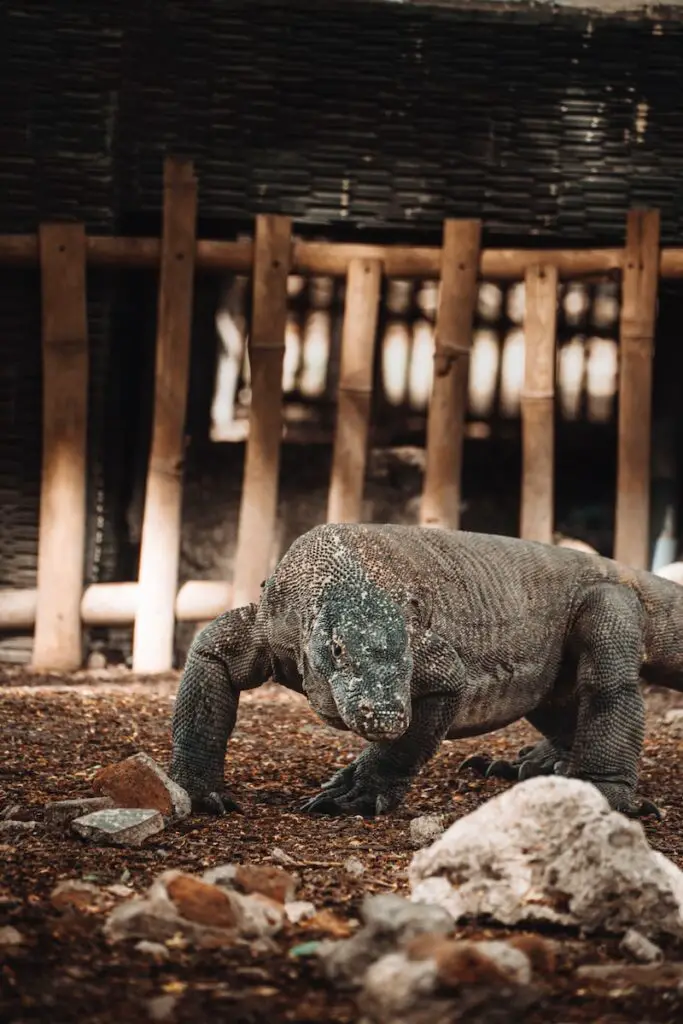
How Do Lizards Climb Walls?
Lizards are intriguing creatures with unique adaptations that allow them to climb walls and other vertical surfaces. Their ability to scale vertical surfaces is mostly due to specialised toe pads and sticky capabilities.
On their toe pads, many lizards have minute hair-like structures called setae. These setae are further subdivided into smaller structures called spatulae. Setae and spatulae enhance the surface area of the lizards’ toe pads, helping them to make more contact with the climbing surface.
The van der Waals forces play an important role in their climbing abilities. These are weak intermolecular forces formed by the molecules of the lizard’s toe pad and the molecules of the climbing surface. The lizards can cling to the surface due to the increased surface area supplied by the setae and the van der Waals forces.
The setae come into close touch with the surface when a lizard rubs its toe pad on a vertical or inverted surface. The van der Waals forces produce an attraction between the molecules on the toe pad and those on the surface, thus adhering the lizard to the wall. This reversible stickiness allows the lizard to detach and reconnect its feet as it moves.
It’s vital to remember that not all lizards have the same level of sticky ability. Geckos, for example, have the most advanced adhesive systems. Geckos contain millions of setae on each toe pad, and the spatulae at the end of the setae generate a dense network of contact sites with the climbing surface, which increases their adhesive strength.
Furthermore, the texture and roughness of the surface influence the ability to climb walls. Smoother surfaces may offer less grip, but rough or textured surfaces may provide more contact areas for toe pads to attach to.
Finally, lizards climb walls using specialised toe pads that use a combination of setae, spatulae, and van der Waals forces to generate adhesion with the climbing surface. Because of their extraordinary adaptation, they can explore vertical and inverted settings, move through trees, and occupy a variety of ecological niches. The study of lizard adhesion has also influenced the development of biomimetic technology, which has resulted in advances in the design of climbing robots and adhesive materials.
How do lizards crawl?
Lizards, unlike humans, prefer to crawl rather than walk. Lizards’ most prevalent way of mobility is crawling, in which they utilise their legs and body to propel themselves along the ground. They move in a spreading fashion, their bodies close to the surface.
Lizards crawl by using their limbs in a coordinated method, rotating between front and hind legs. They propel themselves forward by extending their legs and drawing their bodies forward. It’s as if they’re shuffling or dragging themselves along the ground.
Lizards’ crawling action is well-suited to their body form and habitat. Lizards have relatively short legs in comparison to their body length, which allows them to crawl closer to the ground. They can move through tiny areas, under plants, and on rocky or uneven ground using this mode of locomotion.
While crawling is the predominant way of mobility for lizards, there may be differences in their crawling patterns depending on the species and its special adaptations. Some lizards crawl slowly and deliberately, but others crawl faster and more agilely. The crawling method can also vary depending on the lizard’s body size, habitat, and locomotor ability.
In addition to crawling, some lizards have specialized abilities that allow them to move in unique ways. For example, certain species of lizards, such as the basilisk lizard, can run on their hind legs for short distances, giving the appearance of walking or even “water-walking” on the surface of water. However, such modes of movement are exceptions rather than the norm among lizards.
Overall, while lizards primarily crawl, their diverse adaptations and behaviors make them a fascinating group of animals to study when it comes to locomotion and movement.
Do lizards also walk?
While crawling is the most prevalent way of lizard mobility, several species are capable of walking. Walking lizards have a more erect posture and a synchronised movement of their legs.
The frilled lizard (Chlamydosaurus kingii) is one example of a walking lizard. When threatened or travelling between trees, frilled lizards may elevate their bodies off the ground and take bipedal steps with their rear legs. This gives them the illusion of walking since they move on their hind legs while keeping their forelimbs upright.
The monitor lizard family (Varanidae), which contains species such as the Komodo dragon, is another example. Monitor lizards have rather lengthy legs and can walk on all fours in a more upright stance, much like some larger mammals.
It’s crucial to note that walking in lizards is less common than crawling, and it’s more common in species with unique adaptations or behaviours. Walking ability is frequently related with greater body sizes, longer limbs, and certain ecological niches.
While lizards primarily crawl, their vast diversity of species and adaptations means that their techniques of mobility can vary. Depending on their current conditions and the habitat they are exploring, some lizards may exhibit a combination of crawling and walking.
In conclusion, while most lizards crawl, some can walk on their hind legs or in a more erect stance. Walking is not as common in lizards as crawling, although it is seen in some species that have evolved to specialised ecological niches or exhibit unusual locomotor behaviours.
What is the biology of Lizard’s Movement? (With Respect to Crawling & Walking)
Lizard movement biology, specifically crawling and walking, requires a combination of morphological traits, muscle coordination, and brain control. Let’s look at some of the most important features of lizard biology connected to various ways of locomotion:
Lizards have four legs positioned at the four corners of their bodies, which enables for stability and balance while moving. Their limbs are made up of bones, muscles, tendons, and joints, all of which work together to generate motion and support the body’s weight. The length, position, and flexibility of the limbs can change amongst lizard species, influencing their crawling and walking skills.
Lizards have robust muscles that govern the movement of their limbs. Muscles generate the required force for lifting the body off the ground and driving it ahead. The lizard’s neural system regulates muscle coordination and contraction, allowing for exact control and coordination of limb movement during crawling and walking.
The lizard’s central nervous system, which includes the brain and spinal cord, is essential for movement coordination. The brain sends neural impulses to the muscles, allowing them to control limb movements and locomotor patterns. The spinal cord is also involved in the production of rhythmic motions, such as the alternating motion of the limbs during crawling.
Lizards have a high degree of body flexibility, which helps them navigate different terrains. Their spinal column allows for bending and twisting movements, allowing them to crawl and walk through tiny areas and adapt to uneven surfaces.
Lizards move in a variety of ways depending on the speed and purpose of their movement. Crawling is the most typical gait observed in lizards, in which they move in a sprawling motion, pushing and pulling themselves along the ground with their limbs. Walking, albeit less common, requires a more upright posture and coordinated limb movement, with the lizard’s body lifted off the ground.
Lizards that climb walls or surfaces have specialised adhesion and grip adaptations. Geckos, for example, have toe pads with setae and spatulae that increase surface area and use van der Waals forces to attach to vertical surfaces. These changes improve their capacity to climb and move in various directions.
Overall, lizard movement biology entails the integration of diverse anatomical, muscular, and neural systems. Based on their body form, muscular coordination, and environmental demands, these adaptations allow lizards to efficiently crawl or, in some circumstances, walk. Specific characteristics and skills differ amongst lizard species, reflecting their various adaptations and ecological niches.
Lizards Crawl Vs. Walk (With Examples)
Lizards primarily crawl rather than walk, but there are exceptions where certain species can exhibit a walking-like movement. Let’s compare crawling and walking in lizards with some examples:
Crawling:
- Common Lizards (Lacertidae family): Many lizards within the Lacertidae family, such as the common lizard (Zootoca vivipara), employ a typical crawling gait. They move close to the ground, using their limbs in a coordinated manner to push and pull themselves forward. This crawling motion allows them to navigate through diverse habitats, including grasslands, forests, and rocky terrain.
- Skinks (Scincidae family): Skinks are a large family of lizards found worldwide. They crawl with a distinctive side-to-side movement resembling snakes. This serpentine motion is achieved by undulating their bodies from side to side while keeping their limbs pressed against their sides. Skinks are adept at navigating through narrow crevices and burrows using this crawling style.
Walking:
- Frilled Lizard (Chlamydosaurus kingii): The frilled lizard is known for its ability to walk on its hind legs when threatened or moving between trees. It raises its body off the ground, stands upright, and takes steps with its hind legs while keeping its forelimbs elevated. This bipedal locomotion gives it a walking-like appearance.
- Monitor Lizards (Varanidae family): Monitor lizards, including the well-known Komodo dragon, possess relatively long legs and can exhibit a walking gait. They move on all fours with a more upright posture, similar to how some larger mammals walk. This walking ability allows them to explore diverse habitats, including forests and savannas.
It is crucial to note that while walking has been reported in some lizard species, it is not as common as crawling.
Crawling is the primary mode of mobility for the vast majority of lizard species due to its suitability for their body form, habitat, and locomotor skills. Walking ability is frequently linked to special adaptations such as longer limbs, greater body proportions, or unique ecological niches.
In conclusion, while crawling is the most common mode of mobility for lizards, certain species exhibit walking-like movements. These exceptions demonstrate the lizard family’s unique locomotor skills, highlighting adaptations that allow them to navigate their respective surroundings in different ways.
